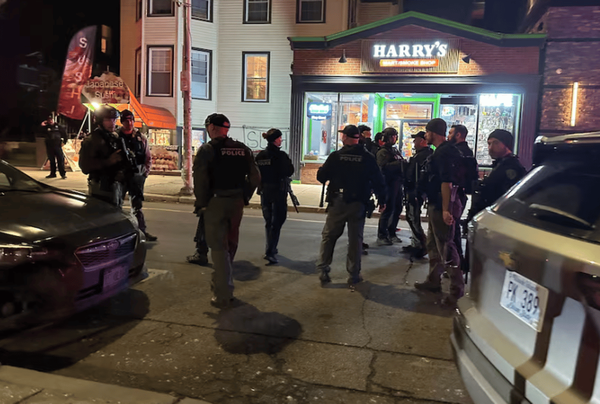
Camarines Norte, a province in the Philippines about eight hours’ drive southeast from Metro Manila, is well known for Bagasbas Beach in the town of Daet, a surfing cradle that opens out to the Pacific Ocean. Also popular is Mahabang Buhangin Beach in the Vinzons municipality, a stretch of powdery white sand that matches the world famous beaches of Boracay.
But Camarines Norte hides its very best, unspoilt, postcard-perfect beaches a bit further down the road in the municipality of Mercedes, named after Doña Mercedes, who aided the poor in the community during Spanish rule.
Mercedes has earned a quiet following over the last few years for its seven small, under-the-radar tropical islands: Apuao Grande, Apuao Pequeña, Caringo, Canimog, Canton, Quinapaguian, and Malasugui. Among these islands, only Apuao Grande and Canimog are inhabited.
With an abundance of pine trees, coral sanctuaries, dense forest trails, empty beaches, and gin-blue waters, Mercedes is ideal for ambitious adventurers seeking solitude. You will never wait in line to get to the port or elbow through crowds to get to the sunbathing area.


Apuao Grande and Apuao Pequeña are two adjoining islands that serve as a camp, but have none of the usual luxury reference points such as mattresses, espresso makers, spas or even restaurants. Between these two islands is a narrow sandbar with creamy sand that houses a couple of nipa huts, stilt houses common in the Philippines. If you are travelling with a big group, an overnight stay would require bringing your own tent.
With their thick groves of pinelike agoho trees, both Apuao Grande and Apuao Pequeña are a good spot for camping, watching sunsets and roasting marshmallows over bonfires. Their feather-soft sand beaches are ready for travellers looking to soak up the sun. If you are lucky, your only company might be the fruit bats that can be spotted flying around at different times of the day.


“People have been coming here since the early ’90s”, says 33-year-old tour guide Israel Bobadilla. “They come here because it is quiet. We do not have what typical islands have. There are no restaurants and bars. No blasting loud music. I guess this is why we have maintained its beauty over the years. It’s really only you and nature.”
According to Bobadilla, who has been a tour guide here for more than five years, a private resort used to operate on Apuao Grande. Meanwhile, Apuao Pequeña has recently been acquired by a private owner. Now it can only be visited with the owner’s permission.
Canimog Island, the largest of the seven islands, is also known as “crocodile island” because of its silhouette. It is characterised by its pebbly, rocky shores and its rugged terrain ideal for trekking. There is an old lighthouse built in 1927 and a viewing deck that offers a bird’s-eye view of the surrounding islands spread across the Pacific Ocean. The trek is a bit of a challenge, but the trail to the lighthouse is lined with trees, so going uphill is an enjoyable adventure.


The panoramic view from the lighthouse, which stands on the edge of a cliff hundreds of feet above the water, is comparable to one in Uluwatu, Bali, says Rafael Philip Ocampo, a photographer and traveller from Manila.
Ocampo has visited more than 40 provinces in the Philippines and almost all the countries of Southeast Asia. He believes the Mercedes experience is definitely one for the books.
“Mercedes’ islands are beautiful because of the beaches, especially Apuao Grande [which] has a clean shoreline,” he says. “The view from the lighthouse in Canimog is breathtaking. I also love the agoho trees because they make me feel closer to nature. But what makes this place really great is that they always keep it clean – unlike other touristy spots.”

Caringo Island, meanwhile, is home to a vibrant community where locals farm seaweed. From the seaweed that they culture themselves, they make gulaman (jelly) for their own consumption. You can explore the entire shoreline by foot, stopping at its blissfully slow-paced fishing villages as you go.
The waters of Mercedes are said to have the biggest abundance of fish in the Bicol region, and its waters include marine sanctuaries and reef walls ideal for snorkelling.
Also known as “The Rock”, Canton Island has a remote beach, massive rock formations, caves and rugged shores. Bobadilla recommends exploring its underwater cave that can only be seen at low tide.

Quinapaguian Island and Malasugui Island are the smallest of Mercedes’ seven islands. Both are unspoilt and offer endless views of the ocean.
For people who want to experience a real castaway holiday, Mercedes is the perfect destination. To explore the islands, you will need to charter a boat from the Mercedes tourism office. Electricity in Apuao is available only from 6am to 6pm. There are no grocery stores, so you have to bring your own food and water. The island has one “bathroom”, but using it requires first lugging water from the ocean.
Getting there from Manila
Take a 45-minute flight from Manila to Pili airport in Camarines Sur. Then take a 15-minute bus or taxi ride to Naga City and from there a two-hour van ride to Daet. From there, take a tricycle or jeepney to the town of Mercedes.
If travelling overland, take a bus from Manila down the South Maharlika highway to Daet. From Daet, the town of Mercedes is a 10-15 minute jeepney or tricycle ride away.

Boat rentals cost between 2,000 and 3,500 pesos (US$38 to US$67) per day depending on the size of the boat, the number of passengers and the islands you visit. There are two jumping-off points for tours: the port of Mercedes and the town of Cayucyucan.
The journey to Apuao Grande takes 30 to 45 minutes on a motorised boat. Most tourists prefer the Cayucyucan route because the waves encountered when leaving Mercedes’ port are higher since it directly faces the Pacific Ocean.
Be aware that some islands are only accessible when the tidal and sea conditions are right; these can be checked through the tourism office.
Staying there
If you do not want to stay overnight on the islands, you can stay in Mercedes town at Villa Criselda Hotel (+63 920 201 1928) or Palms Farm Resort (+63 956 443 9059).
It is best to get in touch with the Mercedes Tourism Office (discovermercedes@yahoo.com, tel: +63 054 444 1261) before going to any of the islands so that arrangements can be made.
The driest months to visit Mercedes for island hopping are March to May. If you would like to immerse yourself in the local culture, however, you can also visit Mercedes in August, when they celebrate the Kadagatan (or Ocean) Festival, dedicated to the area’s rich marine life. During the festivities, locals express their appreciation for the gifts and abundance of the ocean by conducting art workshops, parading creative lanterns and holding fishing competitions.







